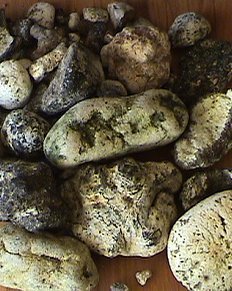
The next thing in flavor?
Earth Day. Earth Hour. Is that enough attention to the topics that have relevance to us every day? Biodiversity for example. That’s the focus of this post, or rather, spices and biodiversity.
Biodiversity is on the decline. Not good. From a purely selfish point-of-view scientists are concerned we’re losing plant and animals species that could bring great value to humanity. So look for and celebrate the different, the odd, the unconventional, and the peculiar.
Here are 3 strange and unusual spices you probably won’t find on your traditional supermarket shelf. It may be a bit of a stretch to even call some of these spices but isn’t that the spirit of this post? The envelope please…
1. Wattleseed.
Evidently, wattle is used regularly by Australian chefs but the spice is deemed strange and unusual to the Northern Hemisphere. There are over 800 types of wattle in Australia and over the past 16,000 years the aborignes have figured out that there are only about 120 edible varieties of wattle. Wattle tastes like a cross between chocolate, chicory, and hazelnut. We can thank Vic Cherikoff, scientist and botanist, for foraging into Australia and promoting its rare herbs and spices. Other spices include mountain pepperleaf, lemon myrtle
and the pungent forestberry herb.
2. Ambergris.
Hope you’re sitting down for this one. It works like this: sperm whales eat squid–preferably those mysterious giant squid that live in the deep depths where sperm whales plunge. After digesting their meals the whales are left with one uncomfortable reality: squid beaks. These beaks get stuck in a whale’s digestive tract where they become encased in a fatty acid excreted by the whale. Eventually the whale casts the lump via the rear exit into the sea. These stinky, oily, black lumps float around and are eventually broken up into smaller chunks. These chunks are described to have a sweet, earthy aroma like pine, tabacco or mulch. The quality of ambergris depends on how it’s been weathered or aged in the sea (think of a fine wine) and will sell for thousands of dollars.
Ambergris has been a sea treasure for thousands of years. In the Middle East they used it in powdered form and consumed it to increase strength, virality and to spice food and drinks. During the Middle Ages it was used to treat a number of ailments. Today it’s still used an ingredient that enhances the olfactory notes of a fragrance. Read more about ambergris here. And if you are really curious, ambergris is available for much less than $8000…but only as an oil for fragrance purposes. This exotic spice/panacea/source of wealth/whale excrement even inspired one artist to translate her ambergris impressions into a painting.
3. Spanish Fly.
Spanish fly is an insect. A shiny, irridescent, green beetle to be specific. Evidentally, its little body can contain up to 5 percent of a substance that is an irritant to animal tissues. Think inflammation (swelling) of key body parts and…well, you know. This is exactly why spanish fly has been historically used as an aphrodisiac. Wikipedia cautiously informs the reader that the required dose is miniscule and the margin between an effective and harmful dose is quite small. Physical damage from an overdose can be permanent.
Why a spice? Insects definitely don’t qualify in any typical definition of spices. But this one is used as an ingredient in some blends for ras al hanout, a Morrocan spice blend that means “head of shop.” When ground up and powdered Spanish fly is yellow to olive-brown with a irridescent hue and bitter flavor. Today, the use of Spanish fly in Morroco is banned.
So there you go. Of all these these the Australian spices sound the most promising. Ambergris is informative as is the Spanish fly. Although I’d stay far away from the latter. There are other ways to get your dose of the spicy aphrodite than a ground insect that can cause permanent tissue damage. What say you?




April 27, 2010 at 10:09 am
Wow…I actually have heard of ambergris before but it was in the context of a fictional work…a spin off novel of Herman Melville’s Moby Dick called “Ahab’s Wife.” (Author Seena Jeeter Naslun) In the story of course, Ahab is always driven to kill Moby Dick but in his pursuit he must also make a living. So their commercial venture is whale oil from the sperm whales and Ambergris. LOL…the author didn’t exactly explain how the Ambergris comes OUT of the whale though! She just alluded to the fact that it was rare, precious and fetched enourmous amounts of money.
April 27, 2010 at 10:40 am
It’s real! I am fascinated by it because so many cultures have valued it and used if for many different things over the centuries. There is a book with the title Ambergris, I ran across it when I stumbled on the artwork. It fiction–perhaps worth a read? Thanks for stopping by!
April 28, 2010 at 2:33 am
thanks for the awards…coming from you and your wonderful blog..it is a honor..
I always learn something new from your post–ambergris- wow I never knew the background of this spice, I guess like fine wines this would also be a fine investment for a wonderful flavor
sweetlife
April 28, 2010 at 11:37 am
Sweetlife,
You’re welcome–you have excellent recipes and I recommend anyone to visit your online place. As for investing ambergris…even a small lump sells for thousands. I’m pretty brave when it comes to trying new flavors but from what I’ve read this flavor definitely has a bit of an oder indicating it that its entry into the ocean is definitely NOT regurgitated. The whole process and intersection with people is just fascinating!
May 3, 2010 at 7:12 am
great post as usual!
May 3, 2010 at 6:08 pm
I have been meaning to order some waddleseed to give it a try, but the other two are new ones to me. Not so sure I’ll be trying to track them down!
May 18, 2010 at 12:35 pm
I love this site. Very glad I ran into it:)
May 18, 2010 at 5:43 pm
Carol, If you try the wattleseed send me a note so I can see how your experiments work out. And Magic of Spice, happy to have you aboard!
May 21, 2010 at 5:39 am
Oh my Lord! Thanks for the heads up! I’m cracking up here – I’ve read about ambergris and I knew it was from a whale, but it was always made out to be something precious, mysterious, rare and worth losing your life over, but, no one, ever said anything about it being pooped out by the whale!!!! LOL All this time I thought the whale was killed and had the waxy stuff cut out of it’s body. I thought it was some special kind of whale blubber. LOLOLOLOL Oh my……